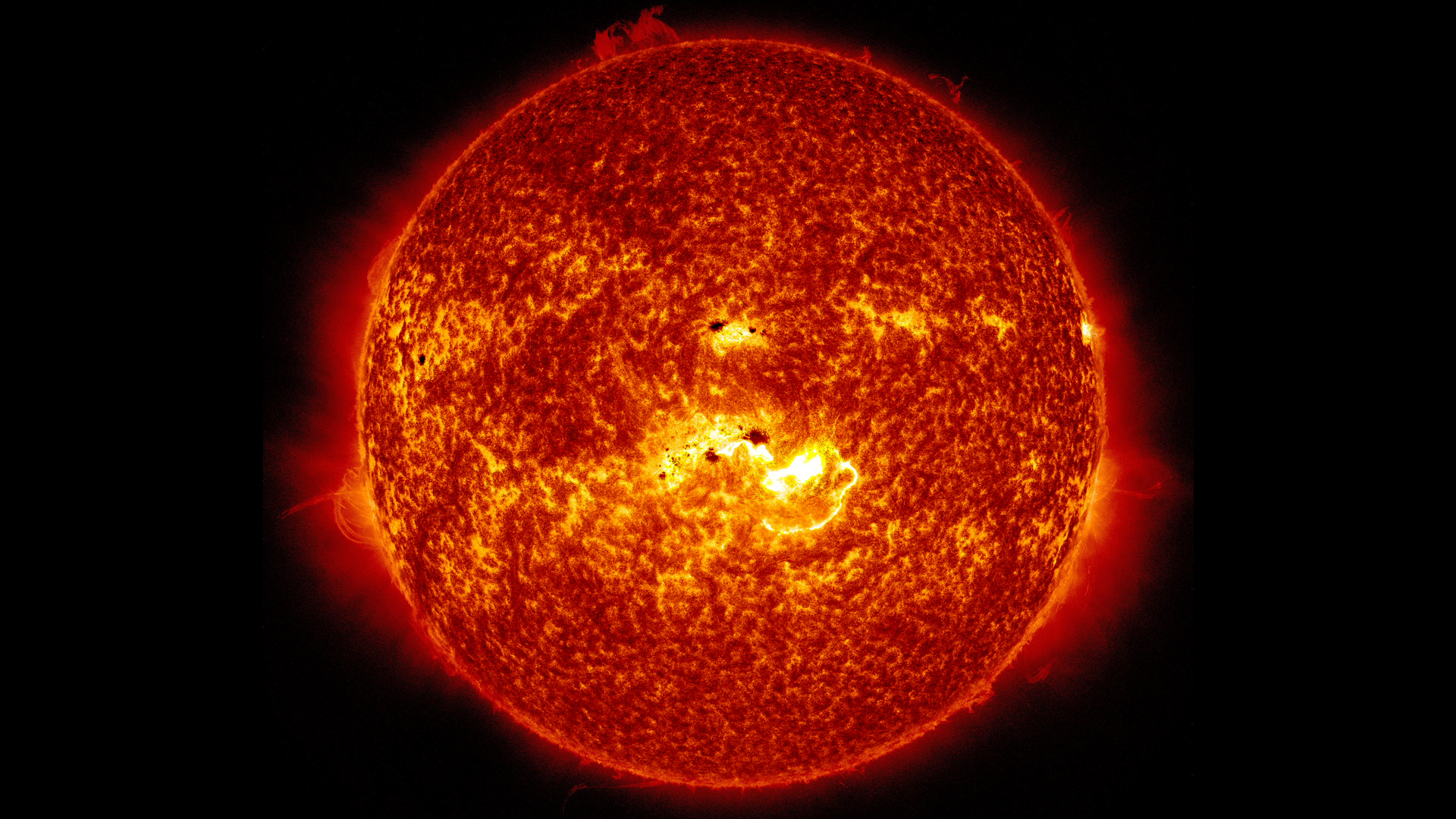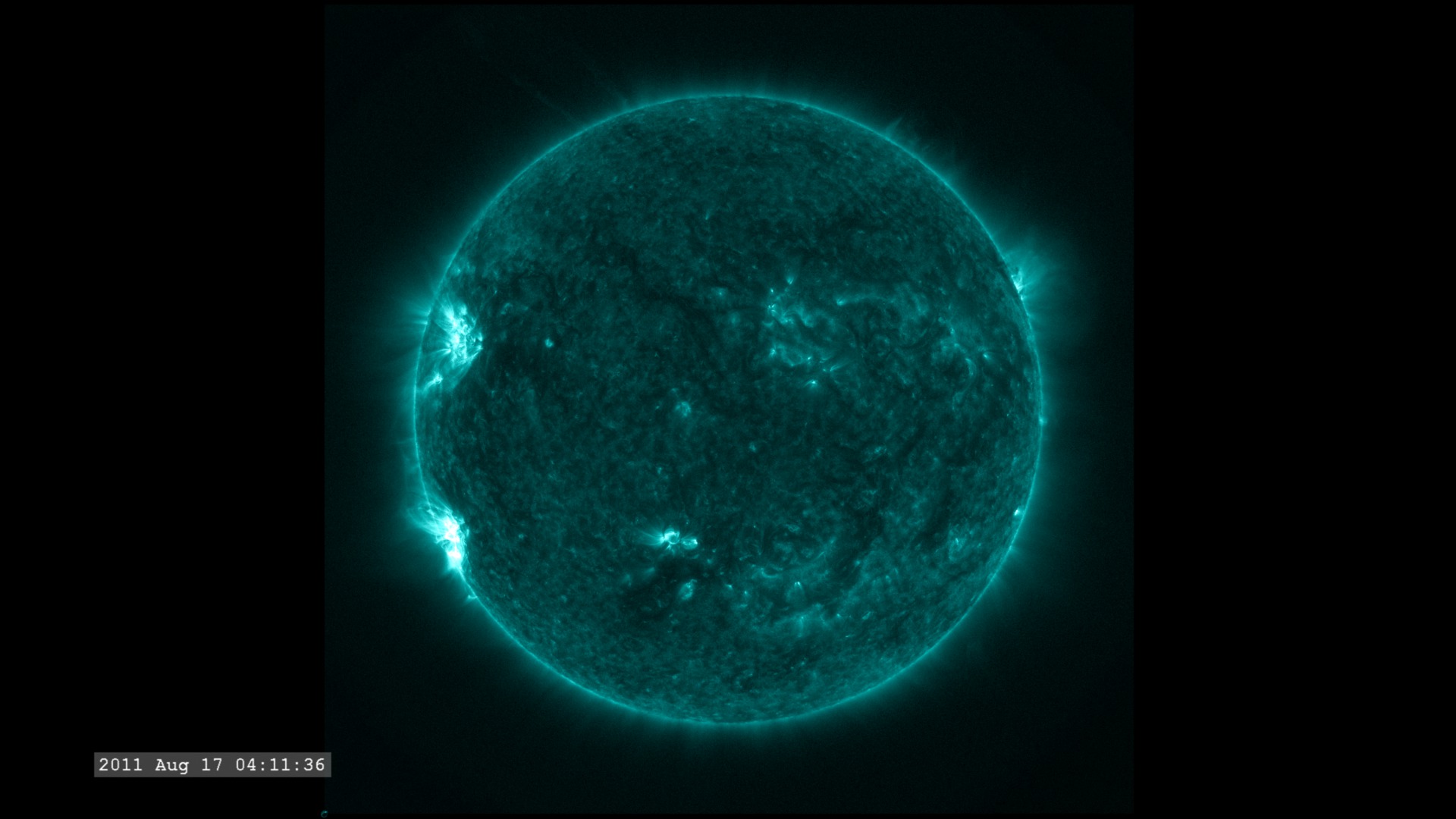X Marks the Spot: SDO Sees Reconnection
Two NASA spacecraft have provided the most comprehensive movie ever of a mysterious process at the heart of all explosions on the sun: magnetic reconnection.
Magnetic reconnection happens when magnetic field lines come together, break apart, and then exchange partners, snapping into new positions and releasing a jolt of magnetic energy. This process lies at the heart of giant explosions on the sun such as solar flares and coronal mass ejections, which can fling radiation and particles across the solar system.
Magnetic field lines, themselves, are invisible, but the sun's charged plasma particles course along their length. Space telescopes can see that material appearing as bright lines looping and arcing through the sun’s atmosphere, and so map out the presence of magnetic field lines.
Looking at a series of images from the Solar Dynamics Observatory (SDO), scientists saw two bundles of field lines move toward each other, meet briefly to form what appeared to be an “X” and then shoot apart with one set of lines and its attendant particles leaping into space and one set falling back down onto the sun.
To confirm what they were seeing, the scientists turned to a second NASA spacecraft, the Reuven Ramaty High Energy Solar Spectroscopic Imager (RHESSI). RHESSI collects spectrograms, a kind of data that can show where exceptionally hot material is present in any given event on the sun. RHESSI showed hot pockets of solar material forming above and below the reconnection point, an established signature of such an event. By combining the SDO and RHESSI data, the scientists were able to describe the process of what they were seeing, largely confirming previous models and theories, while revealing new, three-dimensional aspects of the process.

High resolution still of the site of the solar flare that resulted from magnetic reconnection. This image is from the Atmospheric Imaging Assembly (AIA) instrument on board the Solar Dynamics Observatory (SDO). AIA images at 131 Å show plasma structures hotter than 10 MK.
Credit: NASA/SDO/AIA

High resolution still of the reconnection process, as observed on August 17, 2011 at 04:10 UT, 04:15 UT, 04:19 UT, 04:20 UT.
Magnetic loops begin to pull together. The structure they form has a cusp that flattens on top. Reconnection occurs as a wider X shape begins to form and then splits – with half the solar material falling down and the other half escaping into space. A flare bursts from the arcade of loops, and reconnection propagates further down the arcade.
This image is from the Atmospheric Imaging Assembly (AIA) instrument on board the Solar Dynamics Observatory (SDO). AIA images at 131 Å show plasma structures hotter than 10 MK.
Credit: NASA/SDO/AIA
Animation illustrating magnetic reconnection
Credits
Please give credit for this item to:
NASA's Goddard Space Flight Center
-
Animators
- Walt Feimer (HTSI)
- Tom Bridgman (Global Science and Technology, Inc.)
- Genna Duberstein (USRA)
-
Video editor
- Genna Duberstein (USRA)
-
Narrator
- Aries Keck (ADNET Systems, Inc.)
-
Producer
- Genna Duberstein (USRA)
-
Scientist
- Gordon D. Holman (NASA/GSFC)
-
Writers
- Genna Duberstein (USRA)
- Karen Fox (ADNET Systems, Inc.)
Release date
This page was originally published on Monday, July 15, 2013.
This page was last updated on Monday, January 6, 2025 at 1:27 AM EST.
Series
This page can be found in the following series:Tapes
The media on this page originally appeared on the following tapes:-
SDO Sees Reconnection
(ID: 2013032)
Tuesday, July 30, 2013 at 4:00AM
Produced by - Will Duquette (NASA)

